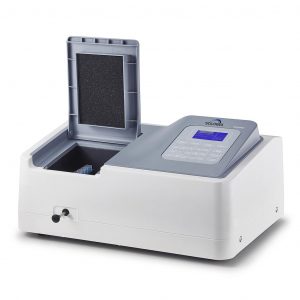Purpose of Test
This test spectrophotometrically determines the light-blocking properties of textile from light passing through windows and light seen on the darkened side of the textile, like a curtain or drape.
The spectrophotometric method is applicable to various fabric types:
- Knits
- Woven
- Nonwoven
- Fabrics taken from end product items
This test is not recommended for fabrics with mesh structures with holes bigger than 3mm across.
Terminology Defined
Light-Blocking – The ability of a textile to prevent light transmission.
Light transmission – The process by which the light is transmitted through the test fabric.
Spectrophotometry – A method used to measure the amount of chemical substance that absorbs light through measuring the light intensity when a beam of light passes through textile.
Spectrophotometer – The measurement tool used to identify the amount of light intensity that passes through the textile.

Test Method
Materials Used for Test
- Test specimen
- Spectrophotometer
- Means of covering light reflectance with white standard tile
- Means of blocking light transmission
Testing Procedure
The test specimen undergoes light transmission using a spectrophotometer. The transmission is recorded and the light-blocking property is determined using standard test calculations.
Test Procedure (Summary)
Part 1: Operational checks: The spectrophotometer is checked for total light transmission with no light blocking and with opaque light blocking.
Part 2: Testing the specimen: The test specimen is placed on the spectrophotometer and undergoes light transmission. The light transmission is recorded and standard calculations are made to determine light-blocking properties.